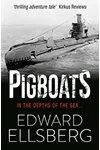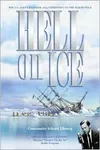Picture a naval hero who dove into the abyss to save sunken ships and then spun those daring feats into gripping tales—meet Edward Ellsberg! A Rear Admiral, engineer, and author, Ellsberg revolutionized undersea salvage during both World Wars and brought the high-stakes world of naval operations to life through his vivid storytelling. His unique blend of technical genius and literary flair makes him a hidden gem in naval history and literature.
Born in 1891 in New Haven, Connecticut, Ellsberg’s journey from a landlocked childhood in Colorado to a celebrated naval officer is nothing short of remarkable. His books, filled with heart-pounding accounts of submarine rescues and wartime heroics, continue to captivate readers with their blend of adventure and authenticity.
The Making of Edward Ellsberg
Edward Ellsberg’s path to greatness began at the United States Naval Academy, where he graduated first in his class in 1914, a rare feat for a Jewish cadet in an era of limited diversity. His academic brilliance continued with a Master of Science from MIT in 1920 and an honorary Doctor of Engineering from the University of Colorado in 1929. Commissioned as a naval officer, Ellsberg quickly developed a knack for undersea salvage, earning fame in 1926 for raising the sunken submarine S-51—a feat that won him the Navy’s Distinguished Service Medal and a special promotion to Commander by an Act of Congress.
After resigning in 1926 to work as an engineer for Tide Water Oil, Ellsberg’s passion for storytelling emerged. His experiences diving into treacherous waters and leading complex salvage operations inspired him to write, turning technical triumphs into thrilling narratives that resonated with a wide audience.
Edward Ellsberg’s Unforgettable Stories
Ellsberg’s writing is a masterclass in blending technical detail with pulse-pounding drama. His first book, On the Bottom (1929), chronicles the harrowing salvage of the S-51, offering readers a front-row seat to the challenges of raising a submarine from the ocean floor. Written with clarity and grit, it remains a classic in naval literature, praised for its authenticity and suspense.
Other standout works include Pigboats (1931), a novel about World War I submarines that inspired the 1933 film Hell Below, and Under the Red Sea Sun (1946), which details his exhausting yet heroic efforts to clear the port of Massawa, Eritrea, during World War II. No Banners, No Bugles (1949) recounts his salvage work in North Africa, showcasing his ability to save ships under enemy fire. Ellsberg’s style is direct yet evocative, weaving real-life heroics with a storyteller’s knack for tension and triumph, making his books both educational and exhilarating.
His historical novels, like Hell on Ice (1938), about the doomed Jeannette expedition, show his versatility, blending meticulous research with emotional depth. Whether writing nonfiction or fiction, Ellsberg’s works reflect his deep respect for the sea and the men who brave it.
Why Edward Ellsberg Matters
Edward Ellsberg’s impact extends beyond his 17 books and naval innovations. His salvage techniques, including the underwater cutting torch and stabilized pontoons, are still used today, saving countless lives and vessels. During World War II, his work in Massawa and Normandy earned him the Legion of Merit and the Order of the British Empire, cementing his status as a wartime hero. His writings, meanwhile, preserve the human side of naval history, offering readers a window into the courage and ingenuity of those who serve at sea.
Ellsberg’s legacy as a bridge between engineering and storytelling endures, inspiring readers and naval professionals alike. His ability to make complex operations accessible through vivid prose ensures his stories remain relevant, even decades after his death in 1983.
- Born: November 21, 1891, New Haven, Connecticut
- Died: January 24, 1983, Bryn Mawr, Pennsylvania
- Key Works: On the Bottom, Pigboats, Under the Red Sea Sun, No Banners, No Bugles
- Awards: Distinguished Service Medal, Legion of Merit, Order of the British Empire
Ready to dive into a world of naval adventure? Snag On the Bottom and discover Edward Ellsberg’s thrilling blend of history and heroism!








